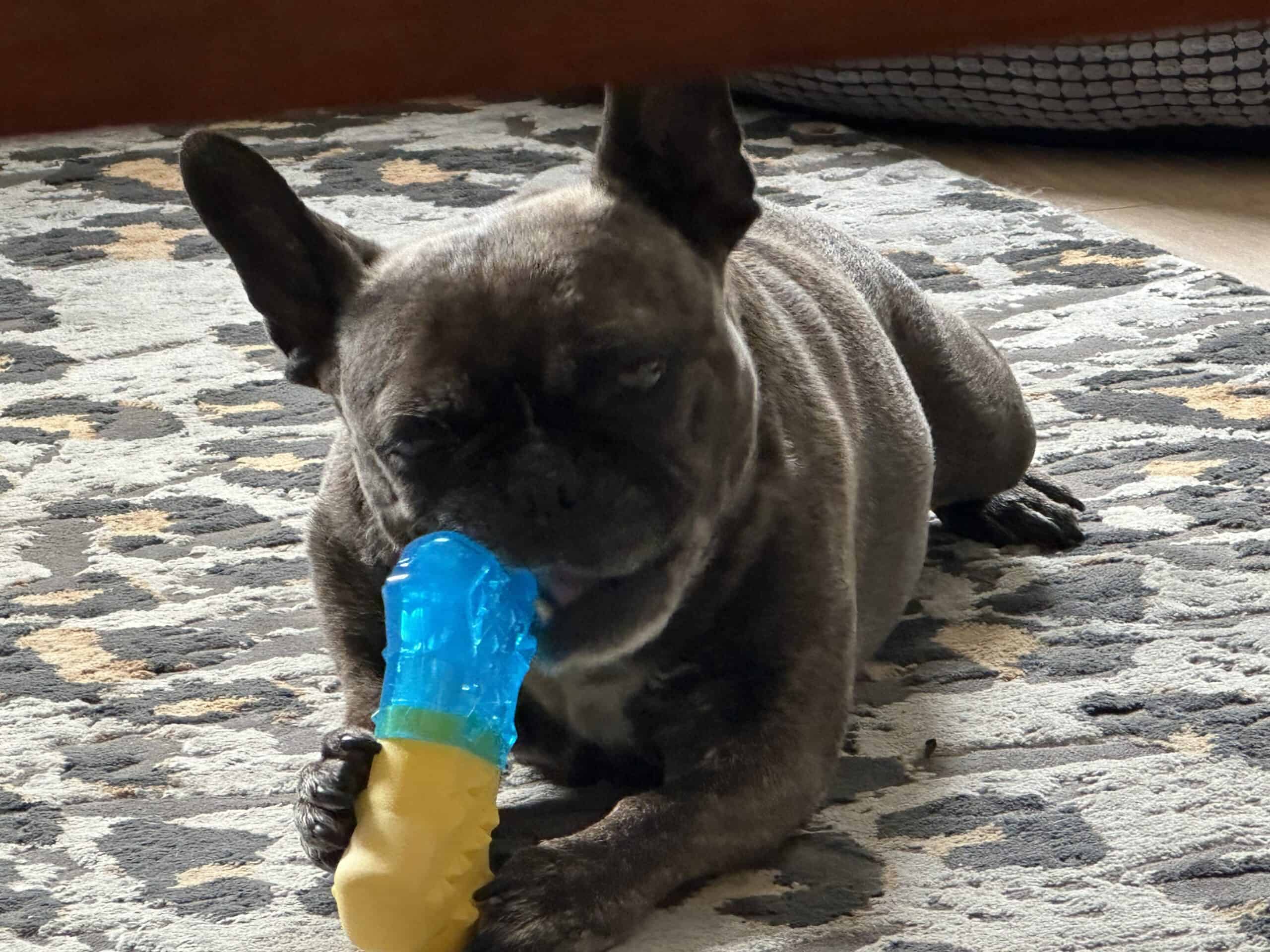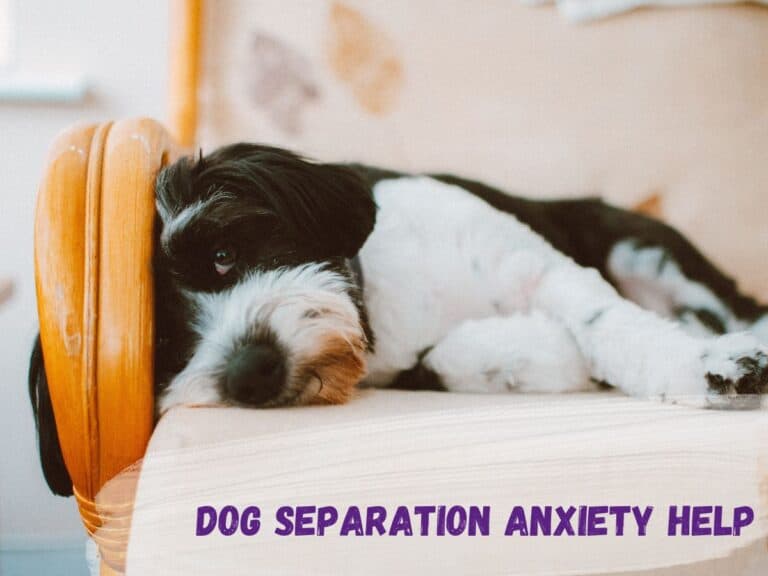How Long Does Separation Anxiety Training Take? A Realistic Timeline
The Pet Coach features affiliate links and participates in the Amazon Services LLC Associates Program. If you choose to make a purchase through one of these Amazon links, I may earn a small commission—at no additional cost to you. These affiliate earnings help support the website and allow me to continue providing free content for pet parents. For more details, please see my disclosure policy.
When you're dealing with your dog's separation anxiety, you'll naturally want to know how long this challenging journey might take. The honest answer isn't what most pet owners hope to hear: there's no universal timeline that applies to every dog, yep every dog is different! Your dog's progress depends on multiple interconnected factors, some within your control and others that aren't. Understanding these variables will help you set realistic expectations and avoid the common mistakes that can actually extend your training timeline.
If you're looking for help with your dog's separation problems get in touch or schedule a call to start fixing separation anxiety today.
Understanding the Timeline: Why Separation Anxiety Takes Time to Resolve
When faced with your dog's separation anxiety, understanding that this behavioural challenge requires a significant time investment becomes vital for setting realistic expectations.
The separation anxiety training timeline typically spans six months to a year, though you usually notice initial progress within two to eight weeks, and you needn't be working with a trainer continually all that time, though it often really helps to have support. This extended timeframe exists because your dog's brain needs repeated exposure to learn that being alone is safe.
Several factors influence this timeline, including the severity of your dog's anxiety, past traumatic experiences, and individual temperament. Underlying medical conditions can further complicate progress, as well as hormonal changes.
Many people encounter regressions and plateaus throughout the process, which are normal parts of recovery, behavioural progress is often never linear, so peaks, troughs and stagnations can be an inevitable part. Consistency becomes essential as your dog gradually builds confidence through methodical training approaches tailored to their emotional needs. Additionally, creating a safe and comfortable environment for your dog during this period is crucial for their emotional well-being.
Factors Beyond Your Control That Impact Training Duration
While you can control training consistency and techniques, several immutable factors will influence how long your dog's separation anxiety takes to resolve.
Genetics greatly impact your dog's predisposition to anxiety – some dogs inherently struggle more despite identical training approaches. Your dog's history also matters: previous traumatic separations or environmental instability can extend recovery timelines considerably.
Underlying medical conditions or chronic pain often exacerbate anxiety symptoms, making veterinary assessment essential before beginning behaviour modifcation protocols.
External stressors like household changes, new family members, or neighbourhood noise pollution can derail progress and restart timelines unexpectedly.
Most importantly, each dog processes safety and security at their own pace. You can't rush this fundamental learning process, so especting your dog's individual timeline while maintaining consistent support ultimately determines successful outcomes.
When training, desensitisation techniques play a crucial role in helping dogs adjust to being alone gradually. But to make a dog less sensitive to being left, you must must must be patient!
Variables You Can Manage to Accelerate Progress
While some factors affecting training duration remain outside your control, you can actively influence several variables to accelerate your dog's progress.
Behavioural wellness and a good hedonic budget to help elevate or mediate your dog's overall mood state, mean we have a dog who is in the right place to start departure training.
Maintaining consistent daily training sessions tailored to your dog's current comfort level creates the foundation for faster improvement. Departure training is not always done every day, after all we always need days off each week, but your dog is always learning, so other types of training should be incorporated in to each day.
Combining this consistency with professional support systems, such as regular trainer consultations, guarantees you're making real-time adjustments that keep your dog moving forward without setbacks. Additionally, engaging with a Certified Separation Anxiety Trainer ensures that you're implementing the most effective strategies tailored to your dog's unique needs.
Consistent Training
Although separation anxiety training timelines vary greatly between dogs, consistent practice remains the most controllable factor in accelerating your pet's progress.
Regular training sessions reinforce positive associations with being alone, creating the foundation for lasting behaviour change. Each session should build upon the previous day's work, with difficulty levels tailored to your dog's demonstrated progress, see also behavioural momentum.
Outside these structured training periods, you shouldn't leave your dog alone, as uncontrolled separations can undo your progress and extend the overall timeline. Daycares and petsitters are excellent to give you wrap around care – you can still have a life when your dog has separation anxiety, you just need a little help.
Weekly live support sessions with a CSAT help you adjust protocols as needed, ensuring your approach remains effective.
Your commitment to this routine, combined with gradually increasing absence durations, will notably speed up your dog's recovery from separation anxiety.
Professional Support Systems
Professional support systems form another variable you can control to accelerate your dog's separation anxiety recovery. Working with a qualified behaviourist provides tailored strategies that address your dog's specific anxiety triggers, potentially speeding up the entire training process through personalised approaches.
Regular live sessions with a trainer via Zoom offer real-time adjustments to your training protocols. This immediate feedback allows you to modify techniques based on your dog's responses, enhancing overall effectiveness and preventing counterproductive methods such as “just let them cry it out”.
Professional guidance also guarantees you're tracking meaningful behavioural data, helping identify patterns that need adjustment. Expert oversight keeps you accountable to consistent training schedules while providing evidence-based modifications when progress stalls.
This systematic approach creates a more structured learning environment for faster improvement.
The Gradual Approach: Why Pushing Your Dog Slows Results
When you're keen to help your anxious dog, the temptation to accelerate training feels natural – but this instinct actually works against you. Rushing separation anxiety training creates anxiety spikes that undermine your dog's progress and can cause significant setbacks.
Your dog needs gradual progression to adjust comfortably to alone time. Each small success builds confidence and teaches them that separation is safe and manageable. When you push too quickly, you're fundamentally asking your dog to handle challenges they're not ready for, which reinforces their fear rather than reducing it.
Building a foundation of easy wins before increasing difficulty guarantees your dog feels secure throughout the process. Additionally, behaviour modification strategies, combined with medication when necessary, can enhance the effectiveness of training efforts.
Setting Realistic Expectations for Your Training Journey
Since separation anxiety training is fundamentally about rewiring your dog's emotional response to being alone, you'll need to approach this journey with realistic timelines in mind.
The training process typically spans several months, with meaningful progress often taking six months to a year. Every dog is unique, so while some show improvement within weeks, others require extended periods to adjust comfortably.
Some dogs may also need anxiety medication in order to support the behaviour modification process, this should really not be seen as a failure.
You'll maintain motivation by setting small, achievable goals – start with just a few minutes alone, then gradually increase the duration.
Consistency matters more than speed; pushing for quick results creates setbacks and heightened anxiety. Recognise your dog's individual pace and celebrate small victories throughout the process.
These celebrations reinforce positive behaviour and keep both you and your dog motivated during this methodical journey. Additionally, seeking recommendations from trusted pet sitters can provide you with support during challenging training phases.
How Medication Can Accelerate the Training Process
When your dog's separation anxiety is severe, medication can serve as a vital training tool that helps them remain calm enough to actually learn new behaviours.
You might feel hesitant about giving your dog anxiety medication, but it's designed to reduce their distress without changing who they are fundamentally.
With proper veterinary guidance and medication support, you can often see meaningful progress in months rather than the years it might take through training alone. Additionally, understanding the different types of anxiety medications, is essential for making informed decisions about your dog's treatment options.
Medication as Training Support
Although many dog owners hesitate to contemplate medication for separation anxiety, it can serve as an essential tool that accelerates your training progress when your dog's fear levels are too high for traditional behaviour modification alone.
Think of medication as a life jacket that helps your dog feel safe while learning to swim through their anxiety. It won't change your dog's personality but will improve their emotional resilience, allowing them to focus during training sessions.
Medication works best when paired with a thorough desensitisation plan, it's notsufficient to be used without modifying behaviour too.It helps reduce your dog's overwhelming fear, making them more receptive to learning how to be alone comfortably.
Overcoming Owner Medication Hesitancy
If you're reluctant to contemplate medication for your dog's separation anxiety, you're not alone – this hesitation stems from understandable concerns about altering your pet's natural behaviour or creating dependency.
However, research shows medication doesn't change your dog's personality; instead, it works at reducing overwhelming fear so your dog can actually learn. When anxiety levels drop, dogs engage more effectively with training exercises, leading to faster progress and better outcomes.
Even with pharmaceutical support, expect several months of consistent work—medication accelerates progress but doesn't eliminate the gradual journey of building confidence.
Medical Issues That Can Extend Your Training Timeline
When your dog has underlying health problems, separation anxiety training takes much longer than you'd expect. Research shows that undiagnosed medical issues often make training harder, with studies finding that more than 28% of dogs with behaviour problems actually have pain-related health issues.
source: pmc.ncbi.nlm.nih+1
Pain makes everything harder for your dog. When dogs hurt, they can't focus on learning and get scared more easily. Hidden health problems sabotage your training progress, sometimes making your dog's anxiety even worse. That's because pain puts your dog's body on high alert, making them feel more anxious about being alone.
Other behaviour issues like fear or aggression often come with medical problems, which means you'll need more complex training plans that take longer to work. Regular vet check-ups help catch problems early so you can fix them before they derail your training.
Sorting out health issues first gives your dog the best chance of success with separation anxiety training.
Tracking Progress: What to Expect Week by Week
Although separation anxiety training requires patience and persistence, understanding what progress looks like during each phase helps you stay motivated and adjust your approach when needed.
You'll likely notice initial improvements within two weeks, though these may be subtle. Track your dog's behaviour weekly during absences to identify patterns and adjust strategies accordingly.
Weeks three through eight typically show more significant progress, depending on your dog's anxiety levels and training responsiveness. Celebrate small victories – reduced whining, staying calm for an extra five minutes, or eating treats and being exploratpry while you're gone.
Remember that progress isn't linear; expect regressions and plateaus.
When Professional Help Becomes Essential
You'll know it's time to seek professional help when your dog shows no improvement after two to three months of consistent training, or when destructive behaviours escalate despite your best efforts.
Recognising these warning signs early can prevent setbacks and identify underlying issues like trauma or medical conditions that you might miss.
Choosing the right certified behaviourist or veterinary specialist becomes essential, as they'll assess factors beyond basic training to create a tailored approach for your dog's specific needs.
In my training, and if clients can afford I typically suggest clients start off with the 6 week intensive programme, or what clients often call dog separation anxiety bootcamp, as the best way to get into good habits and offers the best chance for success. If finances are more of an issue then I do offer a 1 week Home Alone Quick Start programme. Generally, once people are at the point of needing me, I do find they really need that extra level of support with their dog's home alone training.
Choosing Qualified Specialists
Finding the right professional can make the difference between months of frustration and meaningful progress in your dog's separation anxiety journey.
Look for certified animal behaviourists or trainers specialising in anxiety disorders, not general obedience instructors. They'll assess your dog's thorough behavioural profile and environmental factors you might have missed.
What Experts Assess
When your dog's separation anxiety persists despite your best efforts then it's worth calling in professionals.
Specialists analyse your dog's unique emotional responses and behavioural patterns through detailed observation, using video monitoring to catch distress signals you might have overlooked. Your dog's stress threshold is often much lower and their body language so subtle it can be hard to see those early signs of discomfort.
They'll evaluate your dog's body language, stress indicators, and specific triggers that intensify anxiety episodes – pre-departure cues like putting on perfurme or even toothbrushing can easily be missed.
Separation anxiety training is rarely a quick fix – it's a journey requiring patience and consistency. While you might see initial progress within weeks, complete resolution often takes six months to a year, and for some dogs it can often be longer!
Don't be disheartened if your dog's timeline differs; every case I see is unique, each dog has their own quirks and background. Their breed. rearing style, early learning experience and personality will all play a part in how a dog cope's being home alone, and it is rarely the carer's fault that their dog struggles.
Focus on the factors you can control, celebrate small victories, and remember that seeking professional help isn't failure – it's wise. Your dedication will ultimately pay off and your dog will thankyou for teaching them to be brave and happy home alone.
You can book a session with me, or how about learning about the best pet cameras for separation anxiety?






